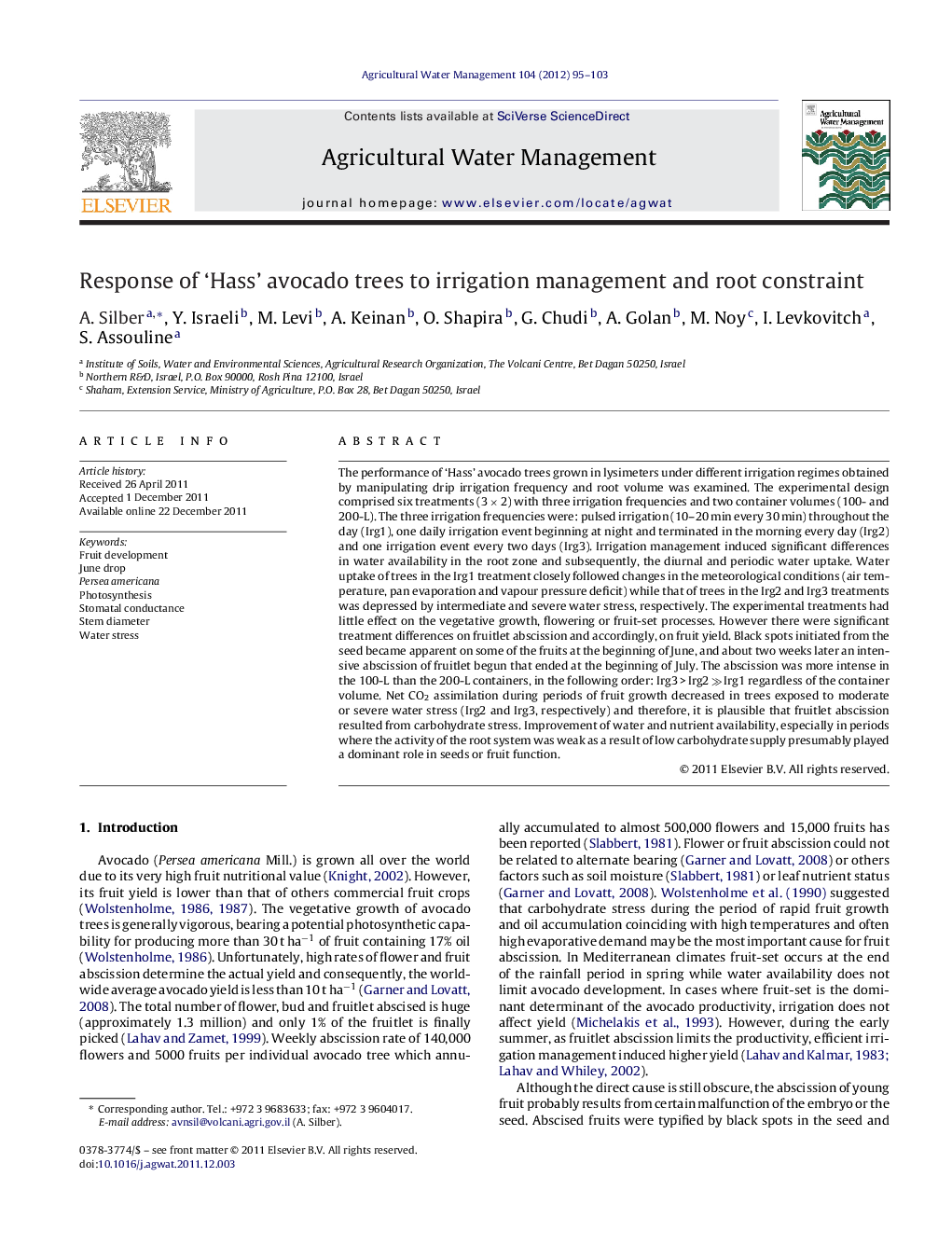| کد مقاله | کد نشریه | سال انتشار | مقاله انگلیسی | نسخه تمام متن |
|---|---|---|---|---|
| 4479175 | 1622975 | 2012 | 9 صفحه PDF | دانلود رایگان |

The performance of ‘Hass’ avocado trees grown in lysimeters under different irrigation regimes obtained by manipulating drip irrigation frequency and root volume was examined. The experimental design comprised six treatments (3 × 2) with three irrigation frequencies and two container volumes (100- and 200-L). The three irrigation frequencies were: pulsed irrigation (10–20 min every 30 min) throughout the day (Irg1), one daily irrigation event beginning at night and terminated in the morning every day (Irg2) and one irrigation event every two days (Irg3). Irrigation management induced significant differences in water availability in the root zone and subsequently, the diurnal and periodic water uptake. Water uptake of trees in the Irg1 treatment closely followed changes in the meteorological conditions (air temperature, pan evaporation and vapour pressure deficit) while that of trees in the Irg2 and Irg3 treatments was depressed by intermediate and severe water stress, respectively. The experimental treatments had little effect on the vegetative growth, flowering or fruit-set processes. However there were significant treatment differences on fruitlet abscission and accordingly, on fruit yield. Black spots initiated from the seed became apparent on some of the fruits at the beginning of June, and about two weeks later an intensive abscission of fruitlet begun that ended at the beginning of July. The abscission was more intense in the 100-L than the 200-L containers, in the following order: Irg3 > Irg2 ≫ Irg1 regardless of the container volume. Net CO2 assimilation during periods of fruit growth decreased in trees exposed to moderate or severe water stress (Irg2 and Irg3, respectively) and therefore, it is plausible that fruitlet abscission resulted from carbohydrate stress. Improvement of water and nutrient availability, especially in periods where the activity of the root system was weak as a result of low carbohydrate supply presumably played a dominant role in seeds or fruit function.
► The experimental treatments induced differences in water availability in the root zone.
► Improvement of water availability significantly increased the number of harvested fruits.
► Black spots initiated from the seed appeared after fruit-set, followed by intensive abscission.
► Temporal water stress considerably increased the number of fruitlet abscission (June drop).
Journal: Agricultural Water Management - Volume 104, February 2012, Pages 95–103